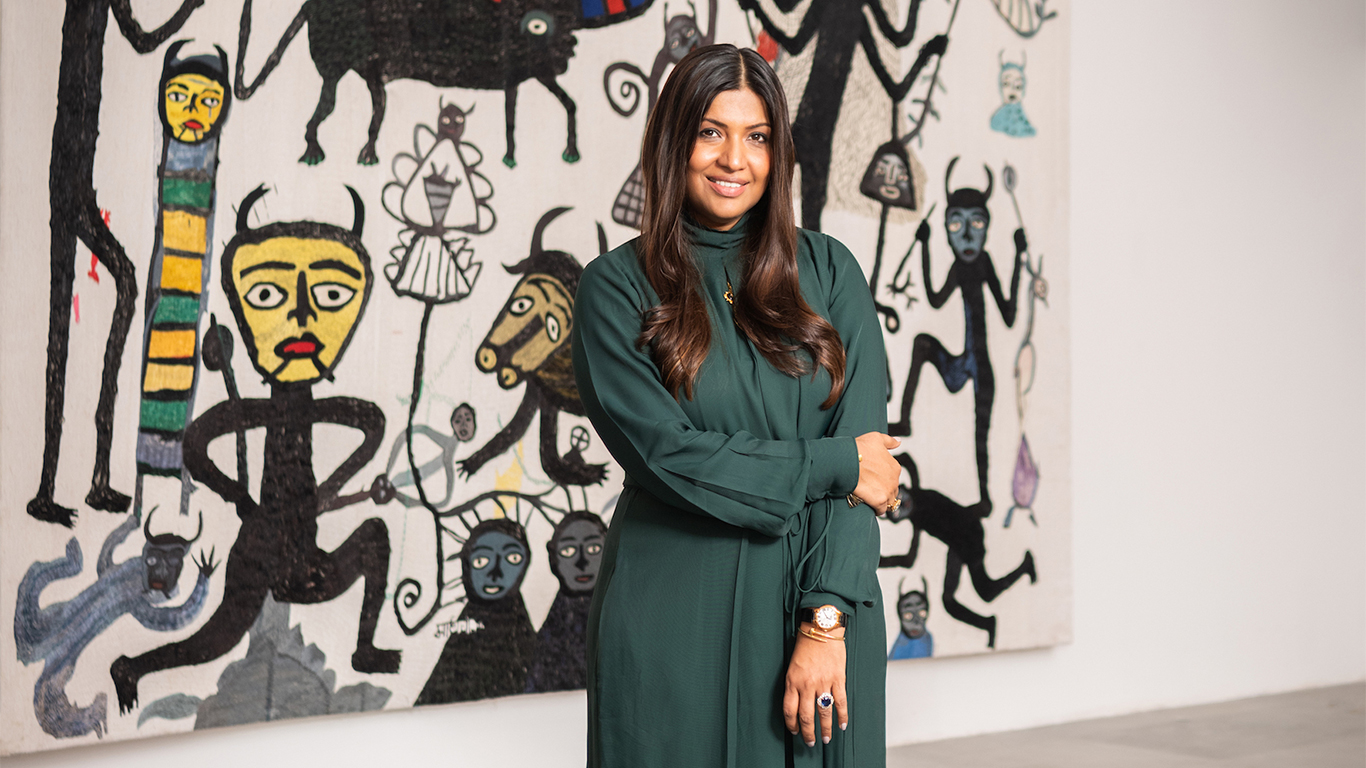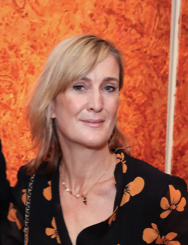‘Cosmic Garden’ is an upcoming collateral event of the 60th International Art Exhibition, La Biennale di Venezia, presented by the Chanakya Foundation and Karishma Swali. ‘Cosmic Garden’ is an artistic collaboration between Madhvi Parekh, Manu Parekh, Karishma Swali and the Chanakya School of Craft, a non-profit institution committed to the emancipation of women through craft. Curated by Maria Alicata and Paola Ugolini, ‘Cosmic Garden’ will take place in the Salone Verde, Art and Social Club, Calle Regina, during la Biennale di Venezia from 20th April until 24th November, 2024.

I started the process of documenting academically the different schools of hand craftsmanship, because I realised in India it had never been institutionalised. I wanted to find ways to be able to preserve that information
Karishma Swali
The exhibition honours the pluralistic beauty of India’s cultural heritage, featuring paintings and sculptures by Madhvi Parekh and Manu Parekh, and the evolution of their practice into a third interdisciplinary medium — hand-embroidery — presented through crafted works and sculptures created by the Chanakya School of Craft and its Creative Director Karishma Swali.
This carefully curated series of works embraces a multidisciplinary approach, dismantling hierarchies between the arts, roles, and genres. The project seeks to re-evaluate the mutual relationship between women and embroidery, transcending the confines of domesticity by bringing hand-embroidery into the public sphere. Madhvi Parekh and Manu Parekh are husband and wife, and are both exhibiting in ‘Cosmic Garden’. However, despite their union of marriage, they have different painting and aesthetic styles. Madhvi Parekh’s paintings depict formidable female deities surrounded by celestial beings and symbolic representations, inspired by Indian mythology.
Manu Parekh’s work, which is also influenced by Indian cultural traditions, in contrast, incorporates aspects of Western modernism and abstract expressionism. His vibrant compositions, characterised by broken lines, stripes, crosses, and floral motifs, embody the cosmic harmony of masculine and feminine energies. What unites Manu and Madvhi Parekh’s artistic practice is a celebration of Indian ancestral traditions and myths, where the spiritual dimension serves as a potent imaginative and creative device. The interdisciplinary works created by Karishma Swali and the Chanakya School of Craft transcend conventional boundaries to carve out an artistic language firmly rooted in collective cultural histories.
Drawing upon that language – first unveiled at the Dior Spring Summer 2022 haute couture presentation – these new works are brought to life through meticulous needlework embroidery and handcraft techniques, utilising organic materials like raw linen, jute, silk, and cotton to capture the purity of the artists’ and Karishma Swali’s aligned vision. Affirming a practice rooted in a dialogue that redefines the roles of both artist and artisan, these three-dimensional works visually encapsulate a true artistic statement, blurring the boundaries between art and craft.
Over her 25-year career, Karishma Swali has dedicated her efforts to the preservation of India’s cultural heritage through craft excellence. Under the guidance of Maria Grazia Chiuri, Creative Director of Dior women’s collection, Chanakya Foundation co-founder, Karishma Swali established the Chanakya School of Craft in 2016 as an institution to help women harness the power of craft to address pressing challenges in society. The school’s guiding mission is twofold: to safeguard India’s cultural heritage and to unlock the infinite potential of craft. To-date, the school has taught over 1,000 women, across all ages and socio-economic backgrounds, forming a strong community of skilled women.
Since 1998, Karishma Swali has led Chanakya International, a global textile house with a four-decade history in the preservation, revival and conservation of India’s intangible cultural heritage. Across her 25-year career, which includes stints at international luxury houses, Karishma Swali has worked towards bringing India’s diverse craft traditions to the forefront. In 2016, Karishma established the Chanakya School of Craft, a non-profit foundation and school dedicated to craft, culture, and creating new autonomy for women.

Karishma was the recipient of the 2022 Grazia Millennial Award for Contemporary Craftsmanship, and in 2021 she was named one of the top 10 leaders in the fashion industry by CEO Insights; she was also recognised as a Cultural Ambassador by Asia Society India Centre and, since 2022, she has been a member of the BoF500, an index of the 500 most influential thought leaders in the world.
Lee Sharrock interviewed Karishma Swali for Art Plugged.
Lee Sharrock: You set up Chanakya School of Craft in 2016, and since then the school has taught over 1,000 women. When you established Chanakya International back in 1998, did you plan to start a school, and did you envisage what impact you would have on the lives of so many women, and how global the collaborations would become?
Karishma Swali: My dad established Chanakya in 1984, so it’s our 40th year as a textile house and craft company. My dad established it and I founded the school, along with my dad’s help. To be honest, we just felt the need to do something, and I don’t think I had thought through how it would go. Actually, in 2014 I started the process of documenting academically the different schools of hand craftsmanship, because I realised in India it had never been institutionalised.
I wanted to find ways to be able to preserve that information. The area that we come from, every village is understood through its craft, and my father thought in order to find a way to keep it relevant and move it forward, he thought it would be interesting to be able to share the craft with the world. He started with 22 masters, and they were all men, typically 11th or 12th generation. He started working with pure silver and gold threads for couture. When I came to Italy I really understood the value of making things by hand, and that’s when I decided to dedicate my time to craft.
Lee Sharrock: How did Maria Grazia Chiuri, Creative Director of Dior women’s collections, become involved with the Chanakya School of Craft, and how did you translate the craftwork and designs of the artists to an Haute Couture collection?
Karishma Swali: After documenting many of the types of hand craftsmanship, I went to Maria Grazia Chiuri – who I’ve known for 25 years – and said I felt the need to have a school where anyone could come and learn. She said she had always seen men in the ateliers (in India) over the years, so it was her idea to dedicate the school to women.
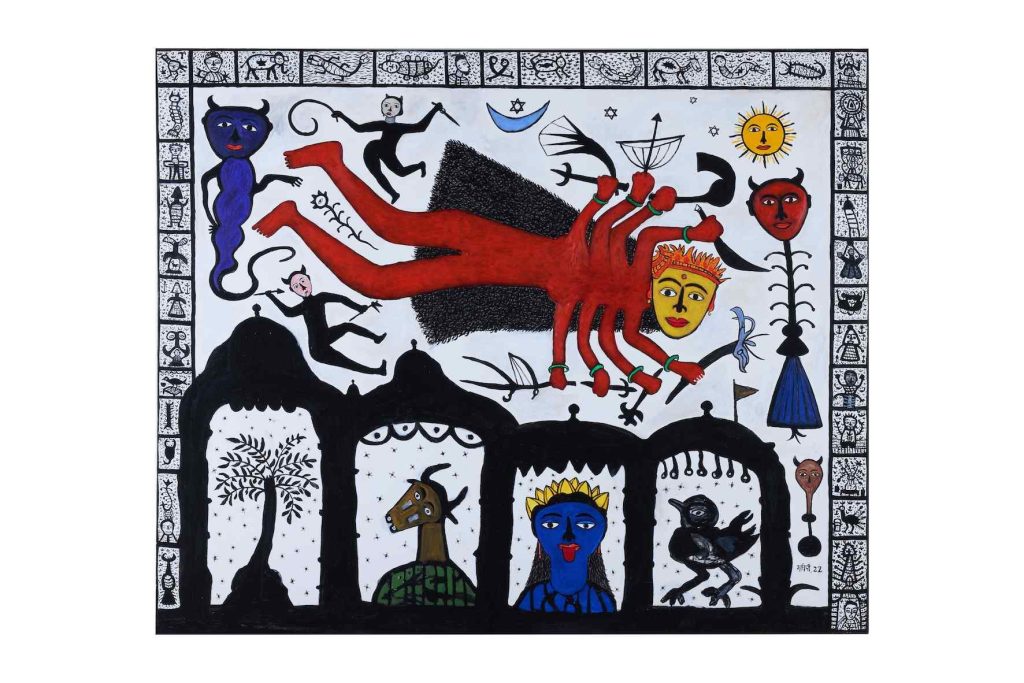
Lee Sharrock: You mentioned that it was traditionally men passing on craft skills to their sons. Why didn’t women inherit those skills?
Karishma Swali: Unfortunately, many women haven’t had the opportunity of financial freedom. This is one of the reasons craft as a vocation has really been only preserved for men in India. We’re excited that the School gives our students an opportunity for expression as well as economic change.
Lee Sharrock: How do you select the women who get to attend the Chanakya School of Craft?
Karishma Swali: It’s a very first come first serve basis. You don’t need to be formally educated to attend the School. In fact, most of our women haven’t had the chance to have a formal education. As long as you’re curious and willing to devote your time to it, you’re welcome.
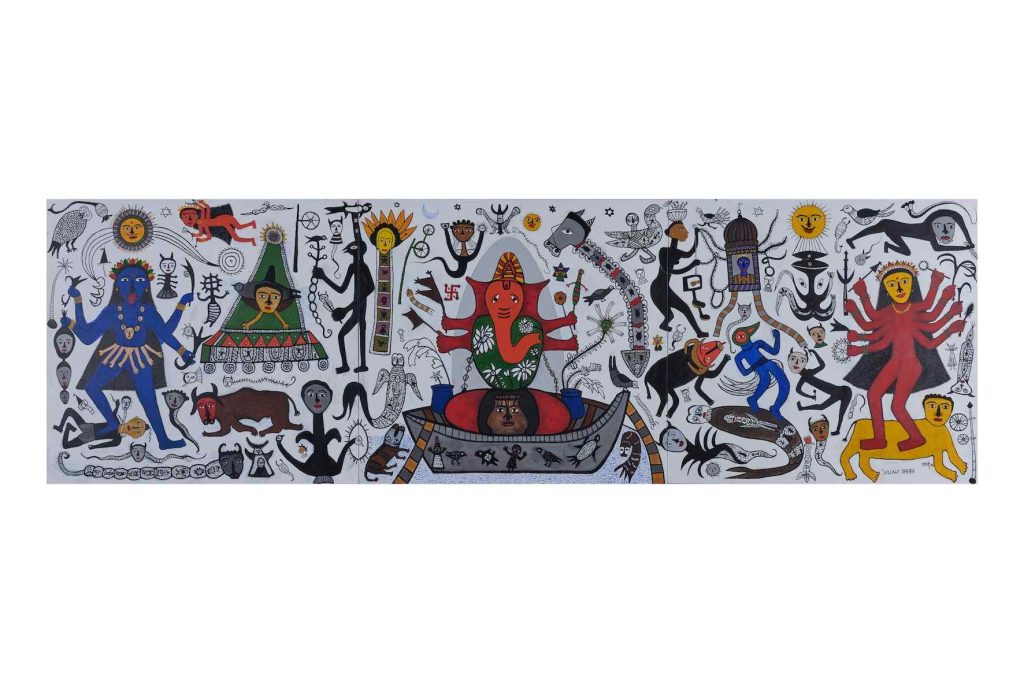
Lee Sharrock: Was the 2022 women’s collection for Dior the first collection where the school was involved?
Karishma Swali: The women aren’t actually involved with the collections themselves. The Foundation is a not-for-profit and is focused particularly on education and preservation. There isn’t actually commercial activity. Once student graduate, they have the opportunity to join an all-female atelier, if they’d like, and extend their learnings into a job.
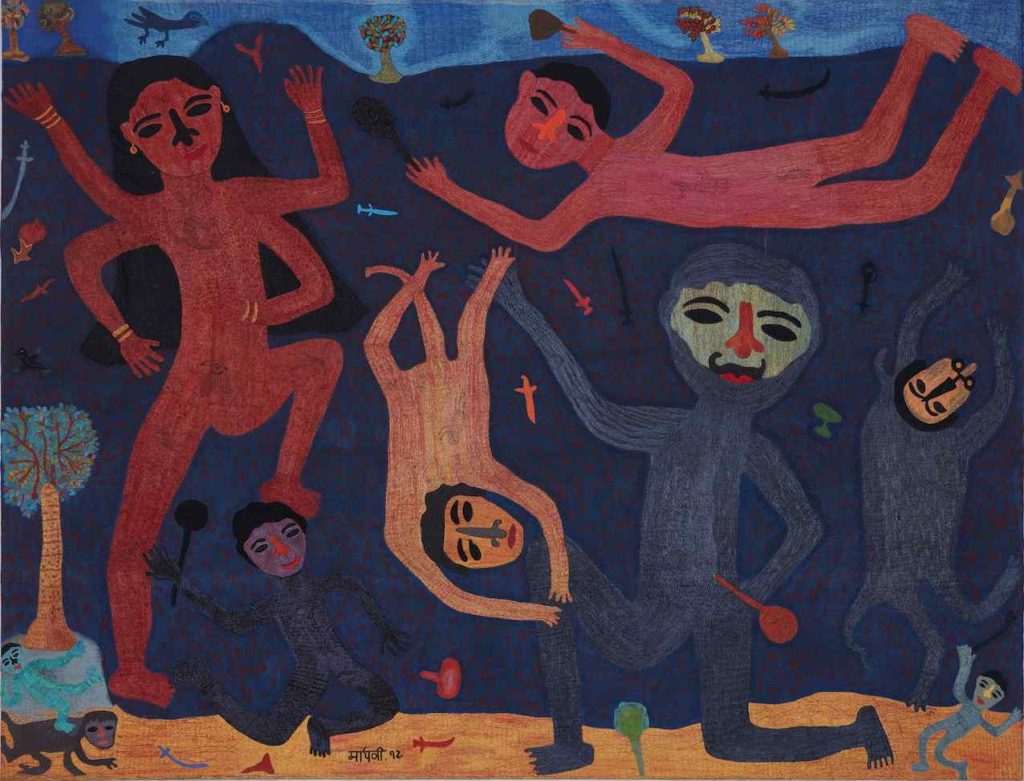
Lee Sharrock: Is it the same kind of model as the Parisian atelier?
Karishma Swali: Yes, it’s exactly the same model. It’s very specific. There are 300 gestures of handcraft that we teach, because those are the most versatile. With that foundation you can also do your own explorations in craft.
Lee Sharrock: Can you describe what will be exhibited in ‘Cosmic Garden’ during the Venice Biennale?
Karishma Swali: There are three aspects: one is the paintings that the artists have done. Second is, we have extrapolated figures from that and created sculptures and thread, so there are papier mache sculptures embedded with thread. And then there are the tapestries that are created by hand using hand embroidery, as well as techniques like crochet. Each area is treated with a different technique, so it’s a big coming together of different textile traditions. The artists (Madhvi and Manu Parekh) have their own paintings, and I work with the artisans to create a language that represents their artistic language. The paintings we’ve created for Venice are monumental in size, around 3 metres x 5 metres.
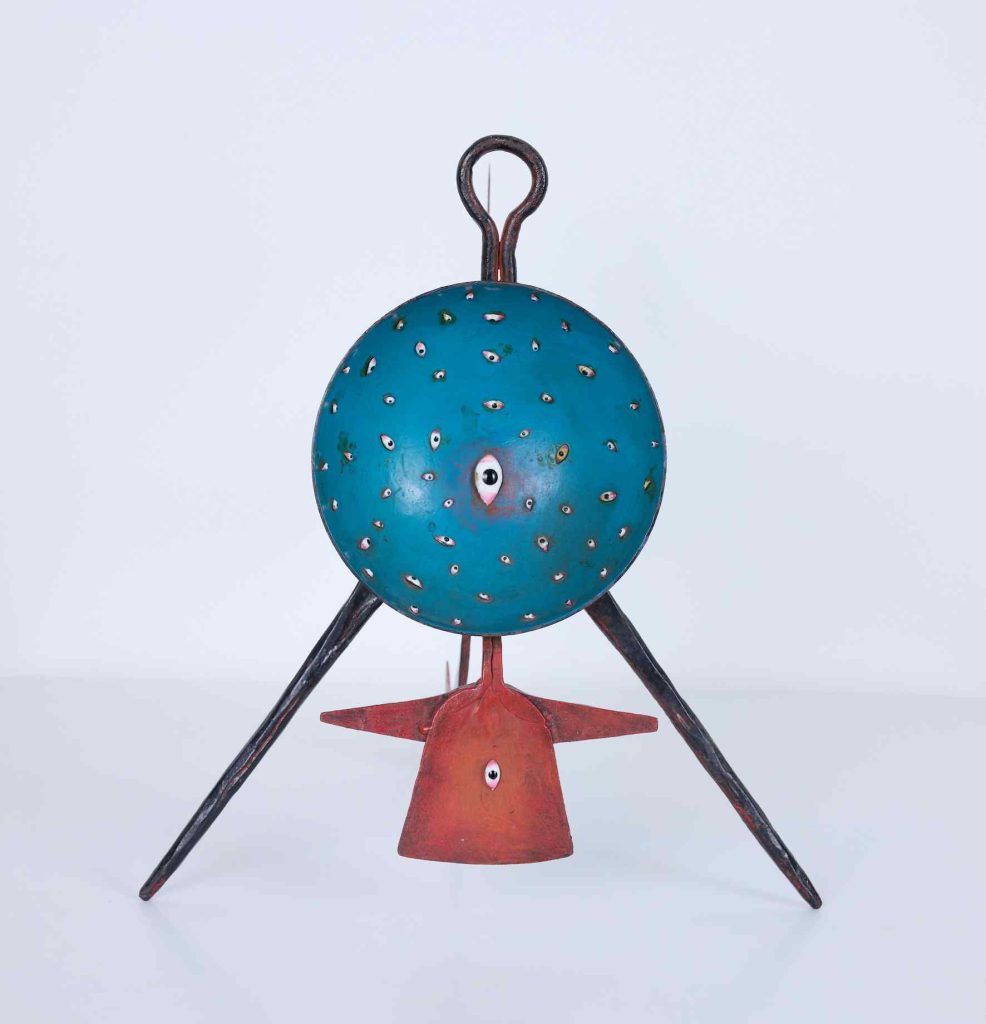
Lee Sharrock: Where did the exhibition title ‘Cosmic Garden’ come from?
Karishma Swali: One of the works that is part of the exhibition is called ‘The Gate of the Cosmic Garden’, and for us we found the Cosmic Garden very appropriately evokes this idea of entering a new world, and discovering this world. One of the key aspects of the foundation is to be able to protect intangible heritage, which is the craft. But the Cosmic Garden exhibition allows us to do this in a tangible way. So, it’s this blend between the tangible and the intangible.
Lee Sharrock: Madhvi and Manu Parekh have been very prolific internationally haven’t they?
Karishma Swali: Yes, and they still make art today! Being in their 80s, they really are a source of inspiration. Madhvi has participated in exhibitions around the world, including in New York, London, Amsterdam, Seoul and Hong Kong. She’s had career retrospectives; her work is part of the permanent collection at the Metropolitan Museum of Art. Manu’s work is also quite well known. He has had numerous shows, and in fact he was awarded the President of India’s Silver Plaque in 1972, the National Award of the Lalit Kala Akademi in 1982, and the Padma Shree by the Government of India in 1992.
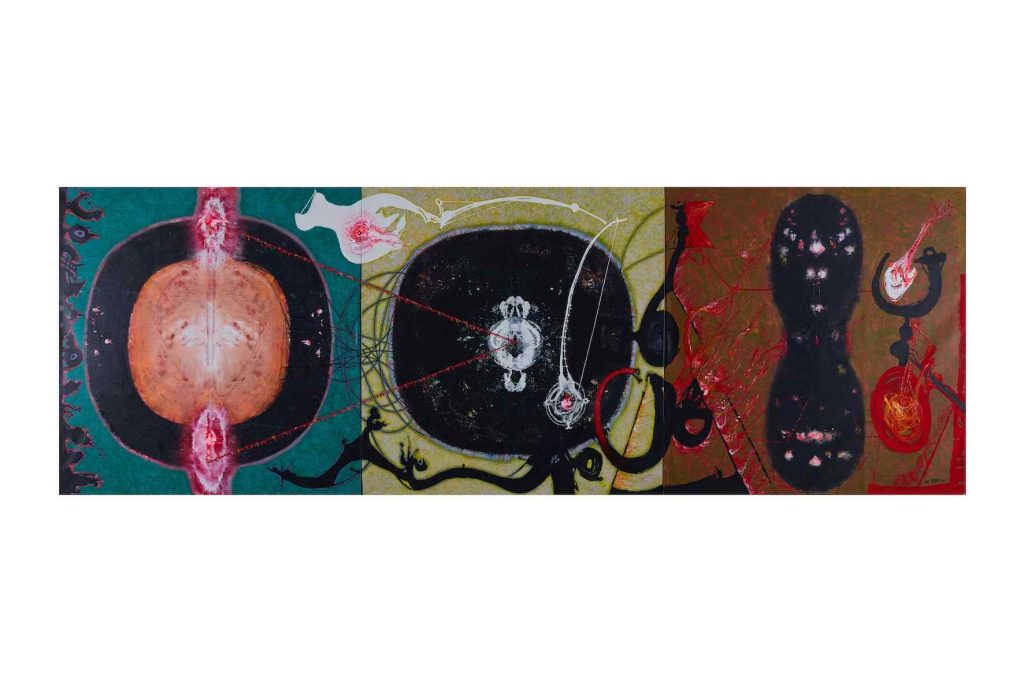
Lee Sharrock: How would you describe the different approaches of Madhvi and Manu Parekh? The curator mentioned that Madvhi’s art is influenced by his Accademia training, while Manu’s is more rooted in Indian deities and history.
Karishma Swali: Manu’s is modern abstraction but still comes from the same Indian vernacular language of celebrating the spirit. And Madhvi’s also is a celebration of the human spirit or Shakti. Some of her paintings feature Durga, one of the Indian Goddesses that really stands for Shakti (female energy). It’s the same centre, but two completely different languages.Most of the colours used in the paintings are derived from plant-based processes. In India there’s a huge history of being able to use roots, and that’s part of the curriculum at the school.
Lee Sharrock: You’ve won some major awards and done so much to give a platform to these women and preserve the heritage of these amazing skills. You and your family must feel very proud.
Karishma Swali: I think we’re very lucky to be able to do what we love. We are just at the start of being able to globally build this movement that globally protects communities.
Cosmic Garden will be exhibited at the Salone Verde, Calle Regina, 2258, 30135, Venezia from 20th April to 24th November, 2024.
©2024 Karishma Swali


